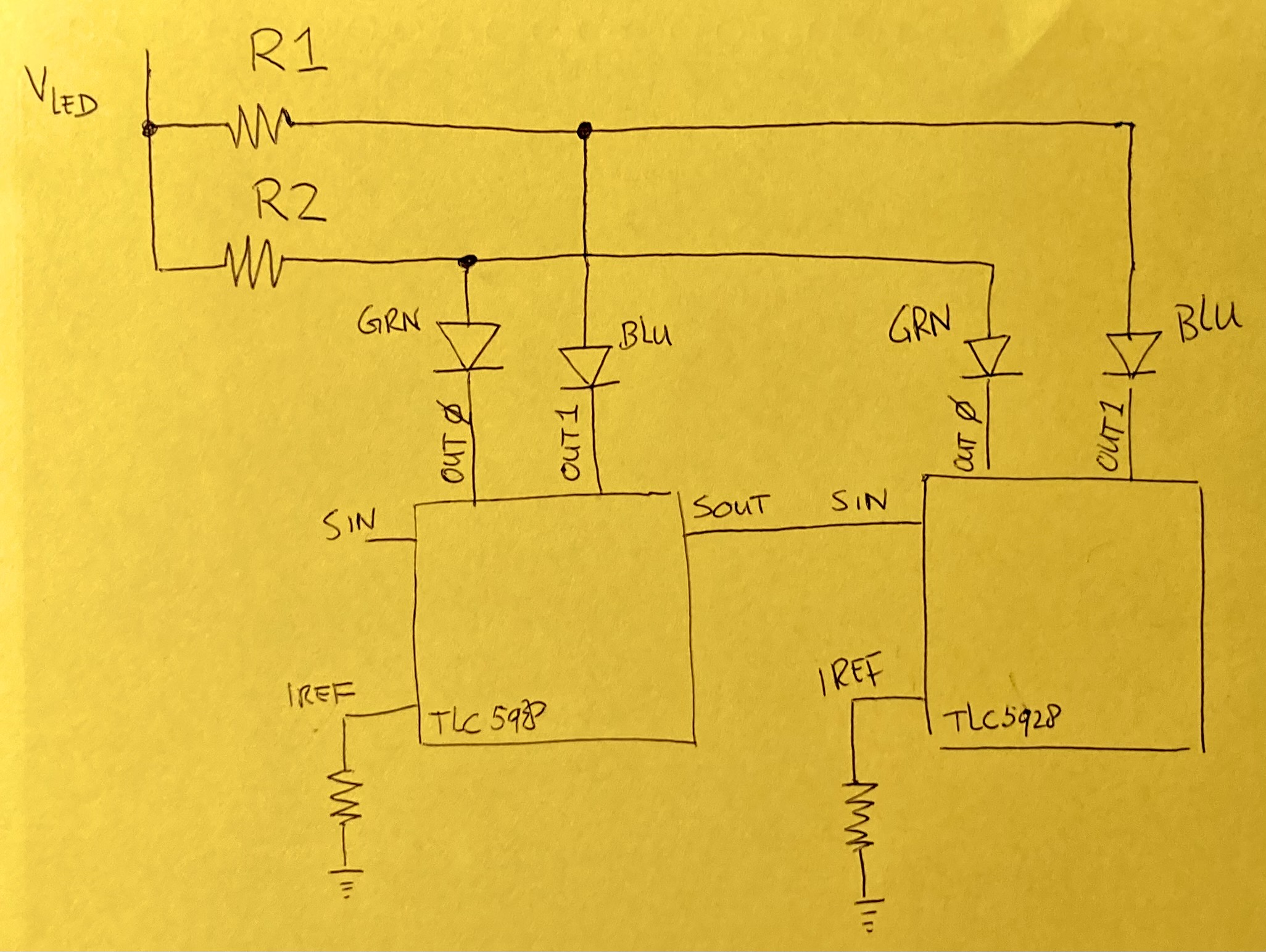So, I am using a constant-current LED driver from the TLC592x series. This driver allows you to tune the current for all of its channels with a resistor RIREF.
The outputs are used to drive a LED bar that has different colour segments.
The problem with different colours in a single bar, is that the GRN LEDs are far brighter than e.g. RED, YLW or BLU, at identical current.
I know that I can tune all the outputs of the TLC592x in unison with the RIREF resistor.
But what if I want to change the brightness per channel, while maintaining identical amperage? (I am targeting 2mA or so per channel of each driver.)
Is it as simple as adding resistors between VLED and the LED anode? With a higher resistance for the green LEDs, and a lower one for the blue ones? (Shown as R1 and R2 below?)
NOTE: In my application, VLED is 3.3V at 300mA or so. And I use 10 of the 16 channels of each driver, with 10 drivers daisy chained.
Also: if this is indeed possible, is it wasteful? Would I be producing more heat and less light, or is that effect negligible? (I thought of doing PWM on the VLED, but Arduino PWM outputs will never be able to source the current, I think.)



